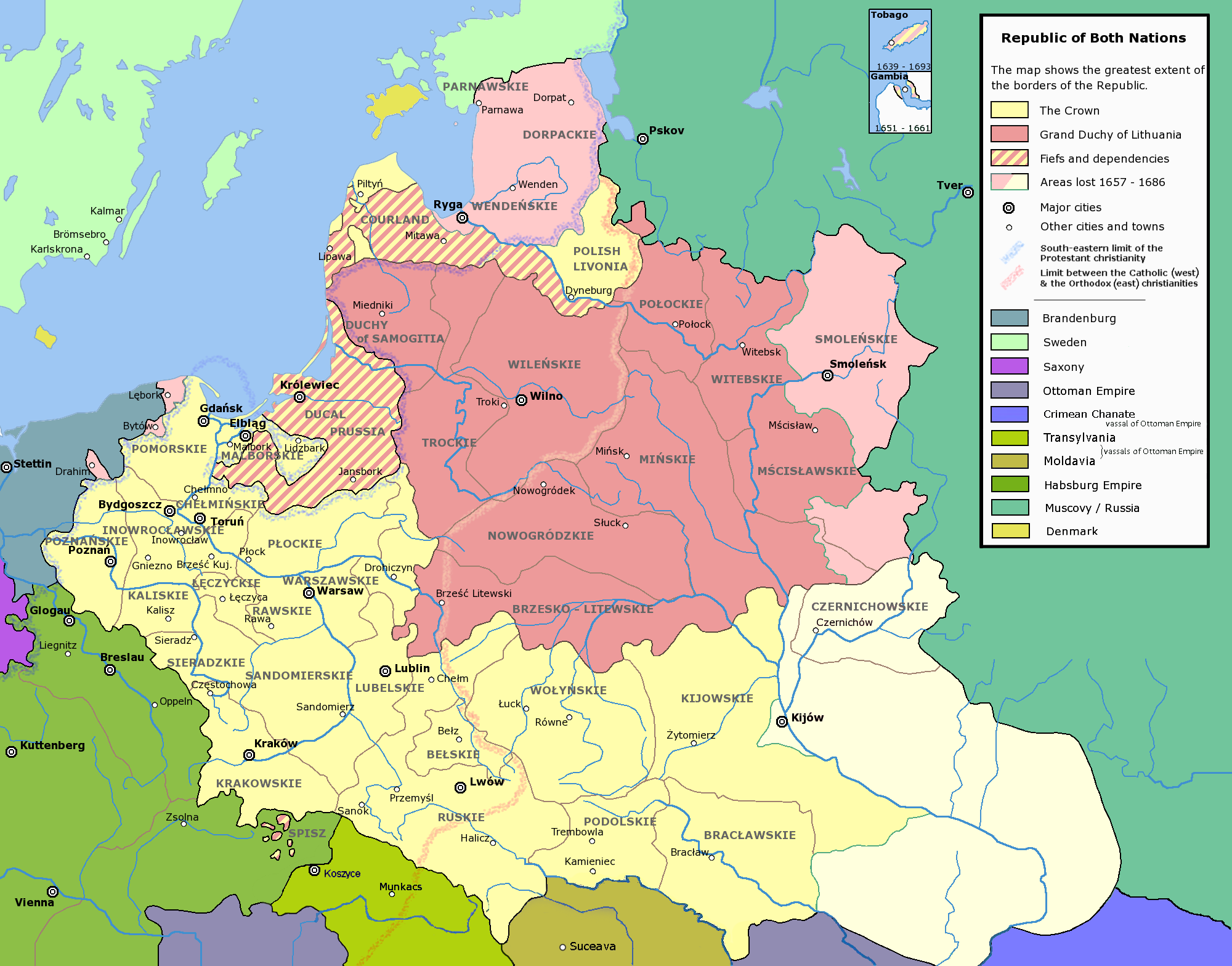This divide also corresponds to the political division between the Kingdom of Poland and the Duchy of Lithuania, and we see that the cultural divide persisted even after the political boundary became defunct. However, Gertner surmised that the Jews of different empires would converge internally and diverge from one another as time went on, thus reshaping these cultural borders. Galician Jews would develop stronger affinities with Austrian, Hungarian, and Moravian Jews, while ties with Volhynia and Podolia would be weakened, and so forth.

A better way of visualizing this is to plot the Maharsham data onto a map of Europe’s year 1700 political borders. 1072 (74%) were sent to areas within the Kingdom of Poland, against 18 (1%) to the Duchy of Lithuania. The internal division of a confederation that had ceased to exist a hundred years before Maharsham’s responsa-writing prime is the most salient border in his sphere of influence.

Returning to the Maharsham heat map, we can break things down more precisely. 790, or 55%, of his responsa were to Galicia. Looking at the dots of individual cities, we see that the responsa were evenly distributed throughout Galicia, more or less. Elsewhere in the Polish Jewish sphere of influence, there are 134 responsa addressed to Congress Poland (9%), and 227 to the eastern Ukrainian regions (16%; this includes the 13 responsa to Kherson, which were all to Odessa, and the 41 sent to Bukovina). Moreover, to the extent that Maharsham’s influence expanded beyond Galicia to the south and west, it was to regions that were very close to Galicia and to which Galician Jews were migrating in significant numbers, especially Northern Moldavia (37), Maramaros (78), and Transcarpathia (27). An additional 10% of his responsa went to these regions. That brings us to 90% of his responsa.
In all, there is a slight shift to the south and west in comparison with RSK. RSK wrote more responsa, both proportionally and in terms of raw numbers, to Volhynia, Podolia, and Kiev than Maharsham did, and most of the responsa that Maharsham sent into Russia were to places relatively close to the border with Austria. On the other hand, Maharsham had more of an influence in Hungary, especially those regions of Unterland that were near Galicia. One can even see that there were a number of communities between Budapest and Galicia–Eger, Mad, and Bodrogkeresztúr (Kerestir), to name a few–that sent their questions to Maharsham (2% of the total). The overall picture is one of striking similarity with a slight tilt away from the Ukrainian interior and toward Eastern Hungary.
Next post will delve a bit deeper into the data and look at some individual cities. For those who want to play along at home, look at Sighet, Przemysl, Cluj, Drohobych, and a town that readers will be becoming familiar with: Bychkiv.
[1] H. Gertner, “Gevulot ha-Hashpa’ah shel Rabbanut Galitzya be-Mahatzit ha-Rishonah shel ha-Me’ah ha-Tesha Estrei: R. Shlomo Kluger ke-Mikreh Mivhan” (“The Sphere of Influence of the Galician Rabbinate in the First Half of the Nineteenth Century: Rabbi Shlomo Kluger as a Test Case”), MA thesis, Hebrew University of Jerusalem, 1996. We thank Prof. Shaul Stampfer for referring us to this work.
[2] There are two maps of the Yiddish dialects out there. We like this one because it shows that Oberland (Western Hungary) transitioned from Western to Mideastern Yiddish, and we like this one because it’s demarcation of the border between Litvish and Southeastern Yiddish is more detailed and precise.
[3] Note that the line drawn on the map associated with this article does not correspond, in any meaningful way, to the actual dividing line between sweet and savory gefilte fish.


